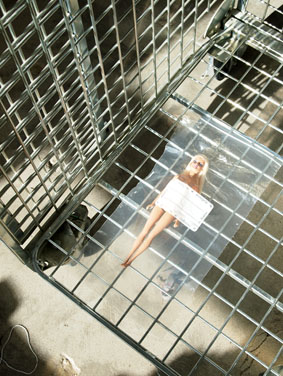Smart Textiles Design Lab Blog at The Swedish School of Textiles
Existential design – The ‘dark side’ of design-thinking

Critical design example
– What makes it possible for people in remand prison to end their lives by e.g. stuffing a sock down the throat and therefore suffocate?
– Or, why is it that people in intensive care units wakes up from an induced coma – confused and frightened – fully convinced that they were in fact robbed from everything they owned and had to walk down the street – totally naked – while as people everywhere were grabbing their arms and legs and started pulling them in every direction, and when they screamed no one seemed to hear as they were busy talking to each other in a language they did not understand?
The ongoing research project, “Existential design – The ‘dark side’ of design-thinking”, is aiming at developing a design manual presenting a new way to think design: a method of designing with focus on ‘designials’ (fundamental forms of design being). Through carrying out an (existential) designial analysis the designer will – above all – open up the design brief, hence bring to light and call into question perspectives that he or she seems to forget. This will help the designer become aware of the complications that may occur if such way of considering the situation is neglected. Moreover, conducting this analysis allows the designer to build on the idea that design holds intentions, purpose, and aims giving concrete gestalt to certain ‘existentials’ (fundamental forms of human being) – and so come closer to understanding what is existential design.
How to get to the ‘dark side’ of design-thinking?
By approaching a product development process in this way, the designer will not only question his or her assumptions and preconceived ideas about design-being per se – and ultimately be stimulated to bring about originality pertaining to the object, its use, and the surrounding environment – but the outcome, i.e. critical design examples will also invite other parts of society to reflect on alternative values and create awareness as to why things are as they are. Like Dunne, when he refers to critical function as “The fit between ideas and things, particularly where an abstract idea dominates practicality, allow design to be a form of discourse, resulting in poetic inventions that by challenging laws (physical, social, or political) rather than affirming them (…)” (Dunne 2006), the (existential) designial analysis will take on a similar role – though in form of cultivating critical design examples that later define and motivate a series of designials.
Researcher on this project: Anne Britt Torkildsby
